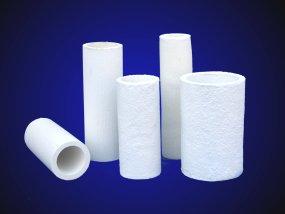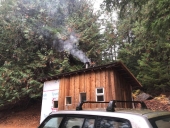
 1
1
















Where there is Liberty, there is Christ!








Where there is Liberty, there is Christ!








Where there is Liberty, there is Christ!




Thomas Tipton wrote:Sidney,
Not sure what to tell you except that from my understanding insulating the barrel will defeat it's purpose and interfere with the exhaust flow.
Thomas Tipton wrote: If the purpose of your rocket stove is just to heat water and not to heat the space the heater resides in then maybe you could re-purpose an old natural gas water heater tank. The concave bottom of the tank will funnel hot flue gas up through the flue of the tank, heating the water in the tank. In this case you would want to vent the flue gasses directly out of the living space. The difficulty I see is in the construction of your heat exchanger.
Thomas Tipton wrote: One last thought, Make your riser out of two steel pipes, one inside the other. Cap it off top and bottom with two steel donuts with a fitting on the top and bottom. This is your boiler.
The idea is to run the flue gas up through the riser, with the riser itself being the heat exhanger. Fluid Dynamics is not my forte, but I can imaging that if you made this tall enough, you could extract a lot of heat from the flue gas before it exits the riser. You would not need a barrel in this case. Just insulate the outside of the riser.
Thomas Tipton wrote:
I encourage you to check out my post
Solar Water Heater / Rocket Mass Heater Fusion
https://permies.com/t/76265/rocket-stoves/Solar-Water-Heater-Rocket-Mass
I'm looking to have as my number one priority, a heated space, secondly, a comfy daybed/bench, and thirdly, a way to preheat my domestic hot water in the winter time when I don't get much out of my solar thermal collector.




Where there is Liberty, there is Christ!
 2
2












Where there is Liberty, there is Christ!








Where there is Liberty, there is Christ!




Thomas Tipton wrote:Sid,
I just wanted to get back with you about an idea I had. Unfortunately, the batch box I was looking at is way to big for my space, and I'm getting too old to want to be crouching down on the floor to load the burn chamber. I think I'm going to compromise and go for a J-tunnel since it would be easier to feed, but I still want an 8 inch diameter profile to heat the size of cob bench I'd like and that's what puts the top of the barrel uncomfortably close to my basement ceiling. (wood)
Thomas Tipton wrote:
I have yet to see anyone attempt a single burn chamber/tunnel, dual riser configuration. what do you think?
Could dual risers, either both in one barrel, or one in each of two barrels serve the needs of one larger burn chamber?




Where there is Liberty, there is Christ!









Where there is Liberty, there is Christ!

|
The tiny ad to rule them all
Play Your Way to a Sustainable Lifestyle: Uncover Permaculture Principles with Each Card
https://gardener-gift.com/
|








